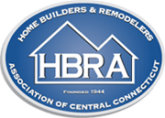Even as the housing market continues its slow and steady recovery, many potential buyers find that qualifying for a mortgage and saving for a downpayment remain high hurdles to homeownership.
The good news is that while lenders are looking more closely at borrowers today than in recent years, there are options for purchasing your home without a 20% downpayment.
In fact, creditworthy borrowers with moderate to low incomes will be able to purchase a home with a downpayment as low as 3% through Fannie Mae’s new HomeReady™ mortgage downpayment program.
HomeReady will expand and replace Fannie Mae’s current affordable lending program, MyCommunityMortgage®, to include both first-time and repeat home buyers. By increasing access to affordable mortgages, more borrowers should be able to purchase homes.
In an effort to increase the types of households that qualify for the mortgage program, more flexible sources of funds can be used for the downpayment and closing costs. For example, income from a non-borrower household member can be considered to determine an appropriate debt-to-income ratio for the loan. This should help multigenerational and extended households qualify for these mortgages.
Multigenerational households, or family households consisting of three or more generations, have become increasingly popular in recent years. According to the most recent Census, approximately 4.4 million American homes had three generations or more living under one roof in 2010, a 15 percent increase from two years earlier.
There are many reasons for this trend. The recession caused many adult children to return home after college, either because they weren’t able to get jobs that would cover rent, or they wanted to save up to buy homes of their own.
Multigenerational households also form so that grandparents can help take care of their grandchildren, and as they age, their children can care for them. This type of arrangement can ease financial burdens as well, with several generations contributing to the mortgage payment and not having to incur the expenses of childcare, retirement housing or professional care-giving environments.
Fannie Mae’s research indicates that these types of extended households tend to have incomes that are as stable or more stable than other households at similar income levels, positioning them well for homeownership.
The new mortgage downpayment program also allows income from non-occupant borrowers, such as parents, and rental payments, such as from a basement apartment, to supplement the borrower’s qualifying income.
Borrowers will be required to complete an online education course about the buying process and the responsibilities of homeownership. In addition, the program will offer homeowners support through the life of the loan to help ensure sustainable homeownership.
More information about the HomeReady program can be found at www.fanniemae.com/singlefamily/homeready.
For more information on home buying resources, contact the Home Builders & Remodelers Association of Central Connecticut at 860-563-4212 or visit us at hbracentralct.com, or visit nahb.org/forconsumers.


